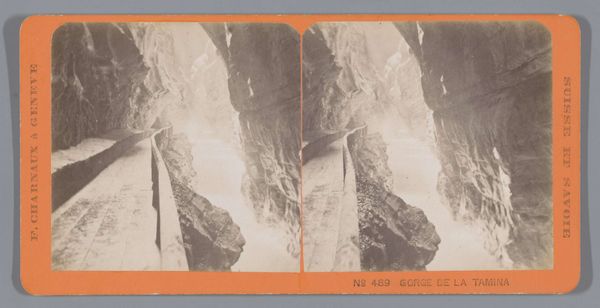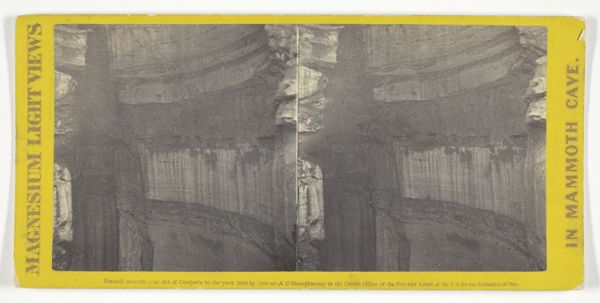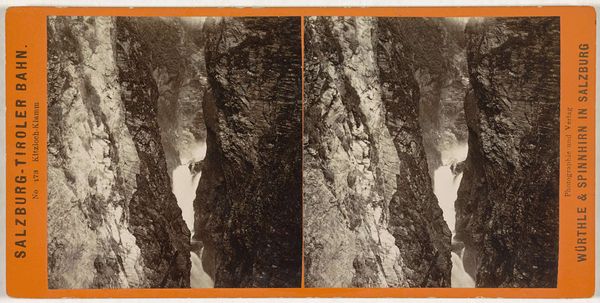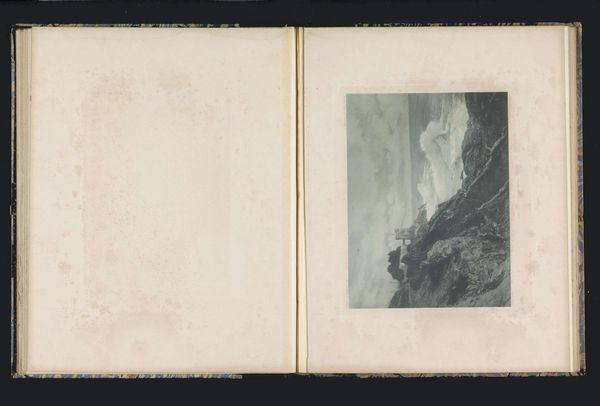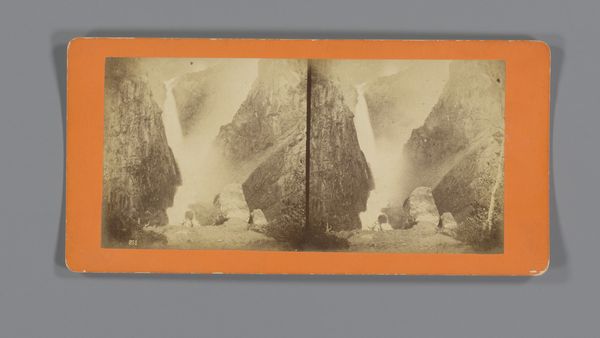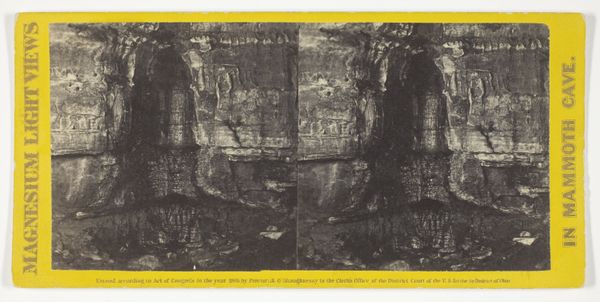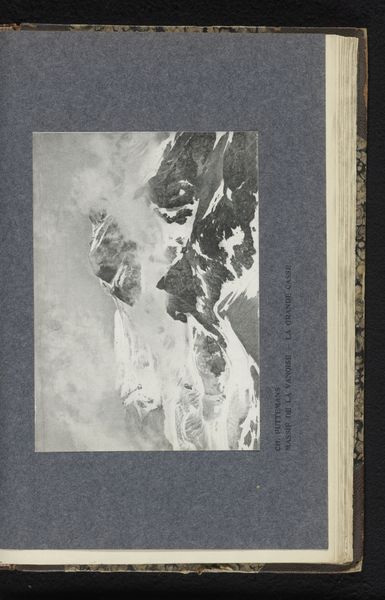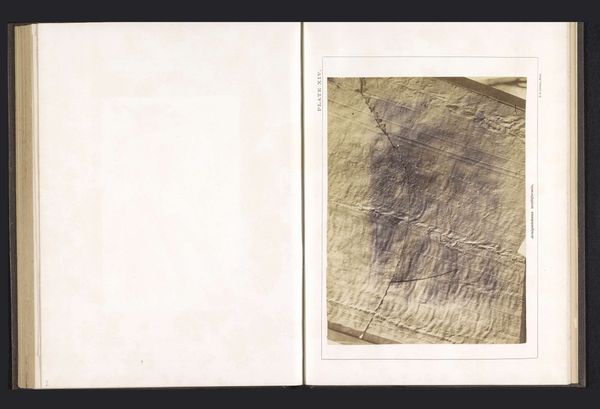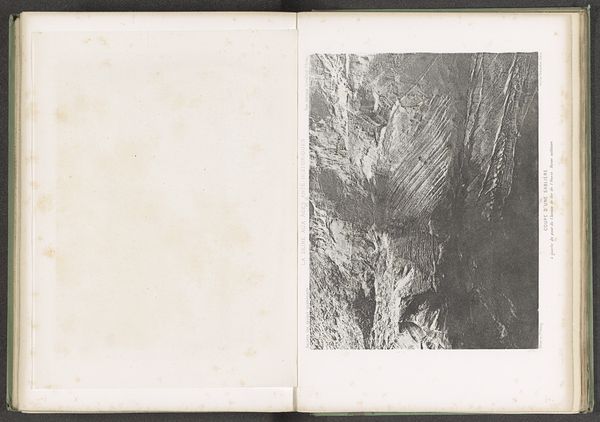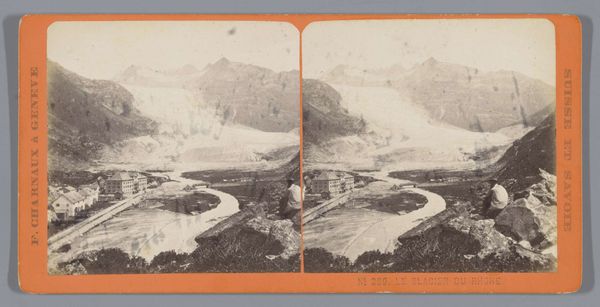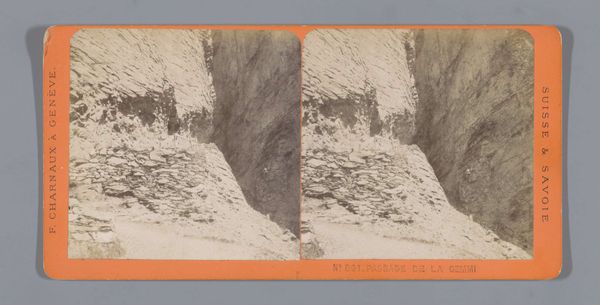
photography
#
natural stone pattern
#
landscape
#
waterfall
#
photography
Dimensions: height 85 mm, width 170 mm
Copyright: Rijks Museum: Open Domain
Curator: Before us, we have a stereoscopic photograph titled "Gezicht op de Reichenbachwaterval," which roughly translates to "View of the Reichenbach Waterfall," attributed to Florentin Charnaux, taken sometime before 1880. The photograph uses a dual image technique common at the time to create a 3D effect when viewed through a special viewer. Editor: The overwhelming impression is one of raw power, almost deafening. The sheer scale of the rocks dwarfs everything else, focusing your eyes on the cascading torrent of water. I feel a strong pull between the solid, fixed earth and the transient, ever-changing flow. Curator: Absolutely, the contrast is central to its visual language. Observe how Charnaux employs light and shadow to sculpt the rock face. The lines, almost geological strata, are incredibly dramatic, directing your eye upward to the cascade. Notice also, the limited tonal range. It almost creates a sense of timelessness, divorced from specific conditions. Editor: And look at those rocks themselves! The texture screams out; I imagine they were painstakingly cut and shaped. Where did the material come from? What processes transformed these geological forms, ready to be transported? The photographic material, the plate, its chemistry; that's where the labor comes in, from the harvesting of raw material to the precise and potentially dangerous work of its making. Curator: Indeed. However, focusing primarily on form, consider the waterfall's almost abstract quality. The movement is cleverly captured by Charnaux— a blur against the solid geometry of the stone. It raises interesting questions about photographic representation, specifically how a single still image attempts to arrest the flow of time. Editor: I am really considering how photography was disseminated at the time. Mass produced images such as these changed how people could engage with images. They had new means of documenting and possessing an image of the landscape for instance. The availability of these works changed how consumers engaged with craft. Curator: Your emphasis on consumption is fascinating! In closing, looking at the overall composition, Charnaux successfully delivers an immersive experience of natural wonder—one framed within an engaging discourse of light, form and representation. Editor: And, for me, a stark reminder of our constant reshaping of natural resources, both materially and through how we circulate images of our own creation.
Comments
No comments
Be the first to comment and join the conversation on the ultimate creative platform.

